Africa
Congo Floods Kill Dozens
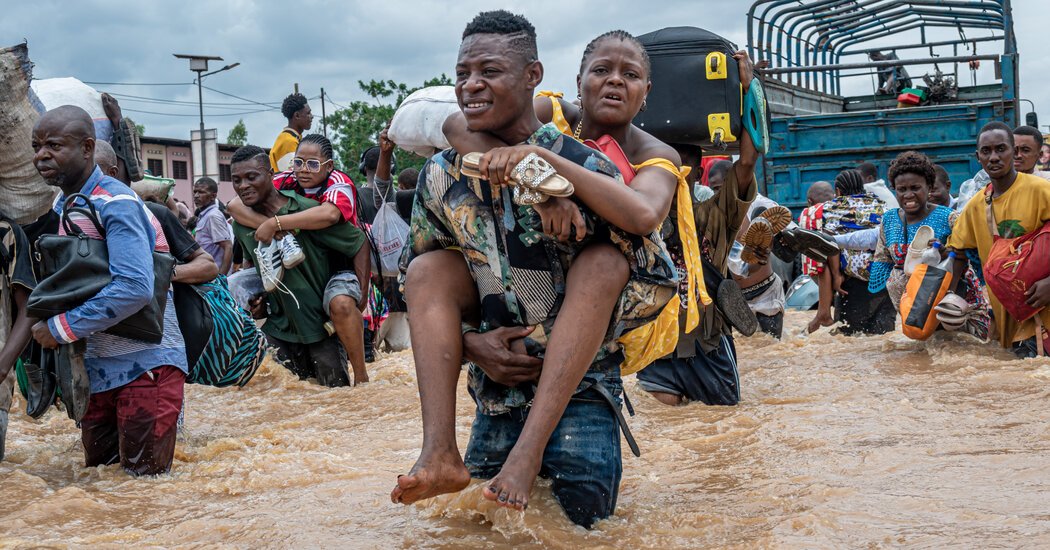
Flooding in the Democratic Republic of Congo
Introduction to the Crisis
Dozens of people have lost their lives in the Democratic Republic of Congo due to torrential rains that have caused severe flooding in the capital, Kinshasa, over the last few days. The floods have destroyed hundreds of homes, leaving thousands of people displaced. The Ndjili River, which runs through the megacity of 17 million people, burst its banks and submerged major roads, including Lumumba Boulevard, the main road leading to the airport.
The Aftermath of the Floods
Government officials have reported that at least 33 people have been killed, though they warn that the death toll is likely to rise as the floods recede. Many African countries, including the Democratic Republic of Congo, are facing frequent and deadly floods and droughts, which scientists attribute to climate change. In recent years, hundreds of people have died annually in the Democratic Republic of Congo as a result of severe rains and flooding.
Response to the Disaster
President Felix Tshisekedi visited the flooded areas on Saturday and promised food supplies and a safe return for those who were displaced. He blamed the high death toll on the illegal settlements that dot the city, which have been constructed on vulnerable hillsides without effective drainage systems. The rapid and largely unplanned growth of Kinshasa has exacerbated the problem, making the city more prone to flooding.
Personal Stories of Survival
Denise Sukali, a 45-year-old mother, has been sheltering in a church with her children since Saturday. She said, "We just managed to save our lives. I’m safe with all my family, but my house is under water." Stories like Denise’s are a testament to the devastating impact of the floods on the people of Kinshasa.
Broader Humanitarian Crisis
The Democratic Republic of Congo is already facing one of the most severe humanitarian crises in Africa. A 30-year-old conflict in the eastern regions of the country has reignited, killing thousands and displacing nearly seven million people. The country is in dire need of humanitarian aid, with millions of people relying on food assistance to survive.
International Aid and Support
The United States spent $910 million on food, water, sanitation, and shelter for displaced people in the Democratic Republic of Congo in 2024, making it one of the largest humanitarian programs in the world. However, the US has since ended most of its foreign assistance to the continent, leaving 7.8 million people at risk of losing food aid and 2.3 million children at risk of malnutrition.
Conclusion
The flooding in Kinshasa is a devastating reminder of the impact of climate change and the need for urgent action to address the humanitarian crisis in the Democratic Republic of Congo. The international community must come together to provide support and aid to those affected by the floods and to address the root causes of the crisis. Only through collective action can we hope to mitigate the effects of climate change and build a more resilient and sustainable future for the people of the Democratic Republic of Congo.
Africa
Tanzania Bans Agricultural Imports from South Africa and Malawi
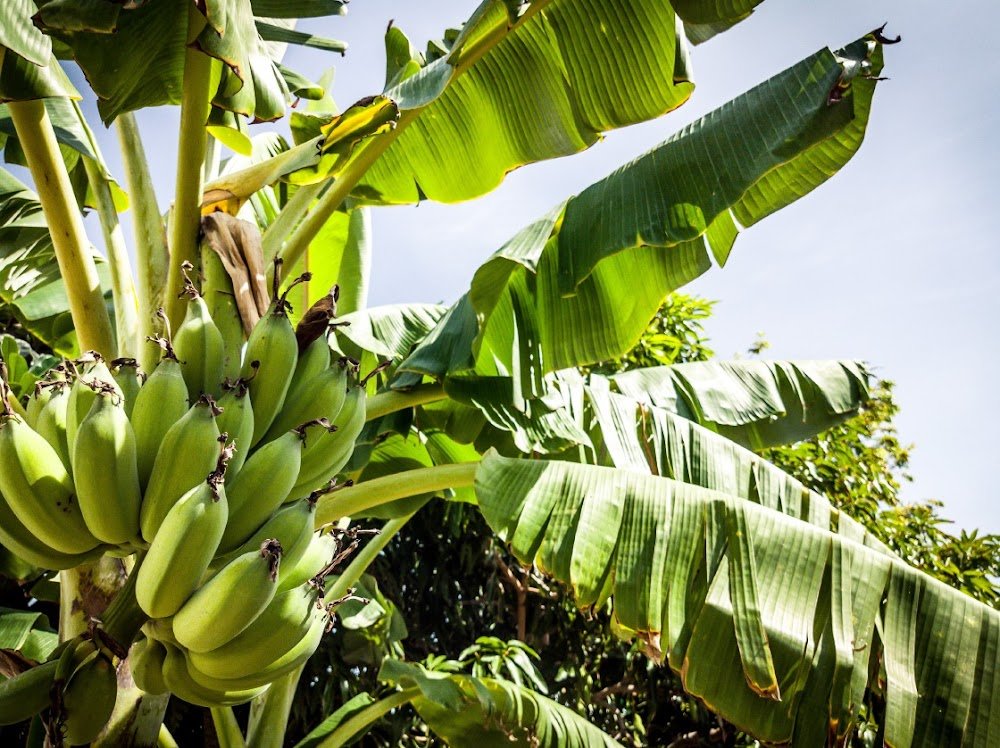
Trade War Escalates Between Tanzania, SA, and Malawi
Introduction to the Conflict
Tanzania has taken a drastic measure by banning imports of agricultural products from South Africa (SA) and Malawi. This move is in direct retaliation for the trade bans imposed by both SA and Malawi on Tanzanian goods. The three countries are part of the Southern African Development Community (SADC), which aims to promote economic cooperation and integration among its member states.
Background of the Dispute
The conflict began when Malawi banned the importation of several Tanzanian commodities, including maize meal, rice, ginger, and bananas. Similarly, SA had barred the import of bananas from Tanzania. Tanzania had given both countries an ultimatum to lift these bans by Wednesday, but they failed to comply.
Tanzania’s Response
In response to the non-compliance, the Tanzanian Minister of Agriculture, Hussein Bashe, announced the ban on agricultural products from SA and Malawi. This decision was made public through a video posted on his social media account. Minister Bashe emphasized that the ban was necessary to protect Tanzanian businesses and to ensure mutual respect among the trading partners.
Additional Measures
Besides banning imports, Tanzania will also prohibit the transit of agricultural goods from other countries to Malawi through its territory. Furthermore, the country will stop exporting fertilizers to Malawi. These measures are intended to safeguard Tanzania’s economic interests and to negotiate a more favorable trade arrangement with the affected countries.
Future Negotiations
Despite the imposition of these trade restrictions, Minister Bashe mentioned that talks with SA and Malawi would continue. The goal of these negotiations is to resolve the trade impasse and find a solution that benefits all parties involved. The ongoing discussions underscore the importance of diplomatic efforts in resolving economic disputes among nations.
Conclusion
The trade war between Tanzania, SA, and Malawi highlights the complexities and challenges of regional trade agreements. While the immediate effects of these bans may seem detrimental, they also underscore the need for cooperation and mutual understanding among trading partners. As the situation unfolds, it remains to be seen how these countries will navigate their trade relationships and work towards a more integrated and cooperative economic community.
Africa
Congo and M23 Agree to Cease-Fire

Introduction to the Conflict
The Democratic Republic of Congo and the Rwanda-backed militia M23 have released a joint statement announcing a commitment to end the conflict that has raged along the border of the two countries since January, killing thousands. This announcement came as a surprise to some observers, as Felix Tshisekedi, the president of Congo, had long said his country would not negotiate directly with M23.
Background of the Conflict
The conflict between Congo and M23 has roots going back three decades. In the mid-1990s, as a genocide gripped Rwanda, millions of people crossed into neighboring Congo, leading to two wars that together killed around six million people, according to U.N. experts. Since January, those hostilities have escalated again. Rwanda claims that M23 is a Congolese rebel movement, while Congo claims it is a front for Rwanda. The group says it is defending the interests of Congo’s Kinyarwanda-speaking communities, which it says the government has failed to do.
Humanitarian Crisis
The conflict has led to a severe humanitarian crisis, with thousands of Congolese fleeing their homes. Recent aid cuts have choked off much-needed humanitarian aid, and sexual violence has soared in the region. According to the U.N.’s children’s agency, a child was reportedly raped in eastern Congo every half an hour, with some of the survivors being toddlers.
Negotiations and Mediation
The joint statement said negotiations, which are being held in Qatar, would continue. Qatar has emerged as a non-traditional mediator in the conflict, hosting talks between Congo and M23, as well as between the presidents of Congo and Rwanda. Previous attempts to mediate between Congo and M23, including by Angola and Kenya, have stalled, with both sides pulling out of scheduled negotiations at the last minute.
Prospects for Peace
Despite the joint statement, it is unclear if the talks will lead to more progress. Mr. Tshisekedi’s government is looking increasingly powerless in the conflict, with its weak military unable to recapture the territory it has lost to M23 since January. Neither side seems to believe a lasting peace agreement is near, with the Congolese government prioritizing the idea of defeating M23 militarily by any means.
Conclusion
The conflict between Congo and M23 has been ongoing for decades, with severe humanitarian consequences. While the joint statement announcing a commitment to end the conflict is a positive step, it remains to be seen if the talks will lead to a lasting peace agreement. The international community must continue to support mediation efforts and provide humanitarian aid to those affected by the conflict. Ultimately, a lasting peace will require a commitment to addressing the root causes of the conflict and finding a solution that meets the needs of all parties involved.
Africa
Al-Shabaab Battles Somali Army for Control of Strategic Base

Recent Clashes in Somalia
Introduction to the Conflict
Mogadishu — Al-Shabaab fighters are engaged in a fierce battle with Somali troops and allied forces for control of a strategic army base in central Somalia. The al-Qaeda linked militants are attempting to extend their recent gains in the region. The base, located in Wargaadhi town in the Middle Shabelle region, houses soldiers, special forces, and clan fighters.
The Importance of the Base
Capturing the base would enable al-Shabaab to sever an important trunk road between the capital Mogadishu, 200km to the southwest, and Galmudug state. This would give the militants a significant advantage in terms of controlling the flow of people and goods in the region.
The Battle for Control
Al-Shabaab claimed in a statement that its fighters had captured the base and Wargaadhi town, but the government denied this. The information ministry said that government forces had killed more than 40 jihadists after they attempted to attack the base on Thursday morning. However, army officer Hussein Ali said that the militants had taken the town of Wargaadhi after “fierce fighting”. According to Ali, the government forces lost 12 men, mostly clan fighters, and about 20 al-Shabaab fighters were also killed.
Challenges Faced by the Government
The government is struggling to send reinforcements to the area because they would need to use routes passing through areas held by al-Shabaab. Two soldiers said that the government forces, backed by air strikes, had managed to recapture part of the town by midmorning. However, the situation remains uncertain, and it is difficult to verify the claims made by either side about the fighting.
Background to the Conflict
Al-Shabaab has been waging an insurgency in Somalia since 2007 to seize power. Last week, the group attacked the town of Adan Yabal, about 245km north of Mogadishu, which the military had been using as an operating base for raids on the group. The attacks are part of an offensive by the group launched last month. Al-Shabaab briefly captured villages within 50km of Mogadishu, raising fears among residents of the capital that the city could be targeted.
International Support
Somali forces have since recaptured those villages, but al-Shabaab has continued to advance in the countryside. The future of international security support to Somalia appears increasingly precarious. A new AU peacekeeping mission replaced a larger force at the start of the year, but its funding is uncertain, with the US opposed to a plan to transition to a UN financing model.
Conclusion
The situation in Somalia remains volatile, with al-Shabaab continuing to launch attacks and gain control of strategic areas. The government and international community must work together to provide support and stability to the region. The fate of Somalia hangs in the balance, and it is crucial that the international community takes action to prevent the spread of extremism and promote peace and stability in the region.
-
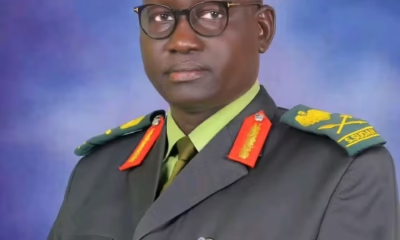
 South Sudan1 week ago
South Sudan1 week agoNo Political Motive in Giada Shootout
-

 South Sudan1 week ago
South Sudan1 week agoWestern Equatoria Launches Peace Initiative for Youth and Women
-

 South Sudan1 week ago
South Sudan1 week agoBor Youth Petition for Wildlife Force Relocation Amid Tensions
-
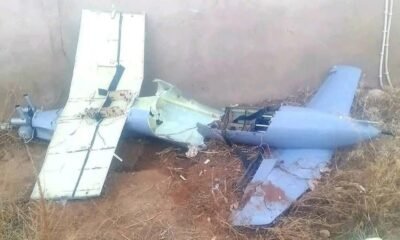
 Sudan1 week ago
Sudan1 week agoSudan Army Thwarts RSF Drone Attacks
-

 Africa1 week ago
Africa1 week agoMali Officials Shut Down Barrick Gold’s Office Amid Tax Dispute
-

 World News1 week ago
World News1 week agoSyrians Destroy Assad’s Icons
-

 Africa1 week ago
Africa1 week agoInvestment App Freezes Users Out, Sparking Savings Loss Fears
-
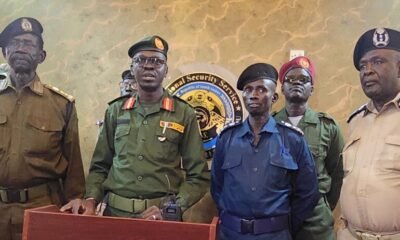
 Sudan2 weeks ago
Sudan2 weeks agoSSOA Forces Defect to Kiir in Large Numbers








You must be logged in to post a comment Login